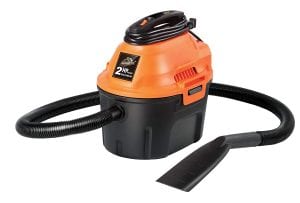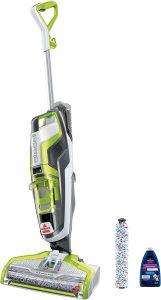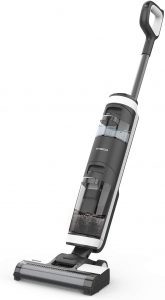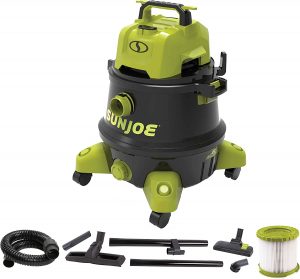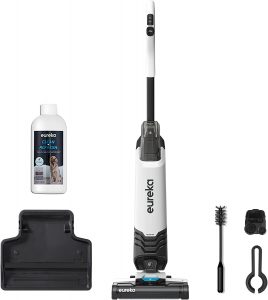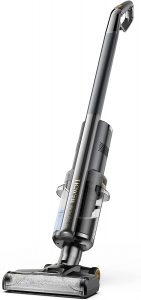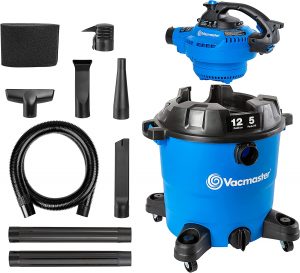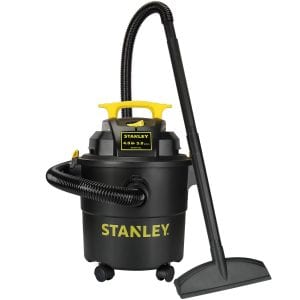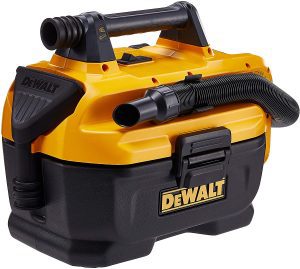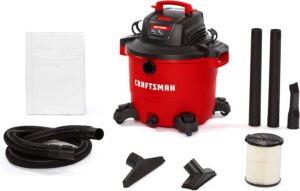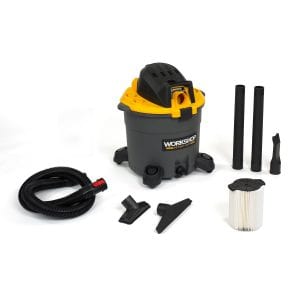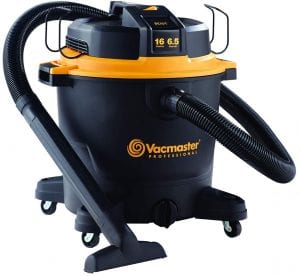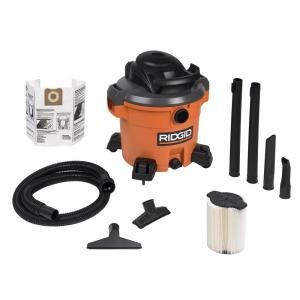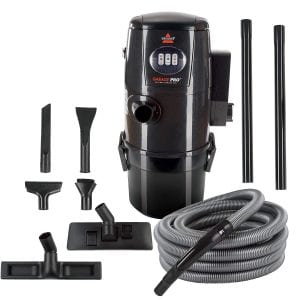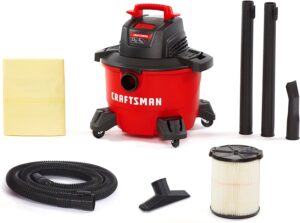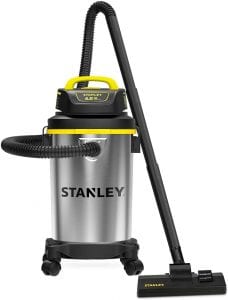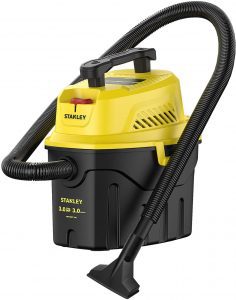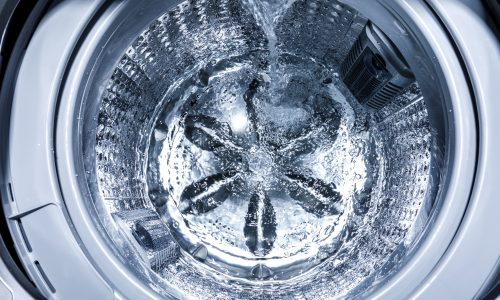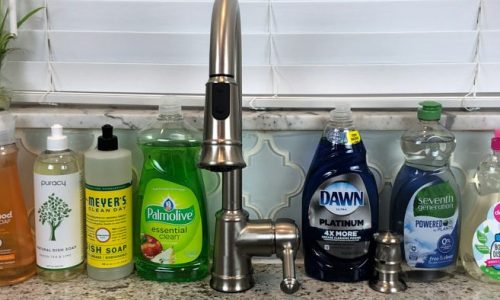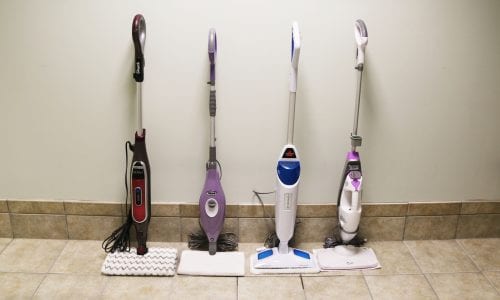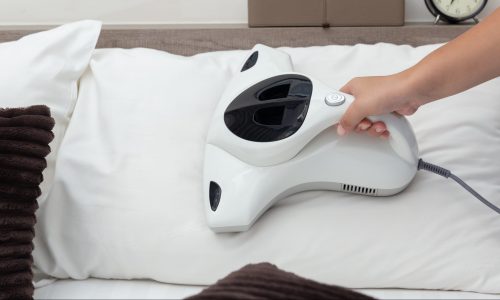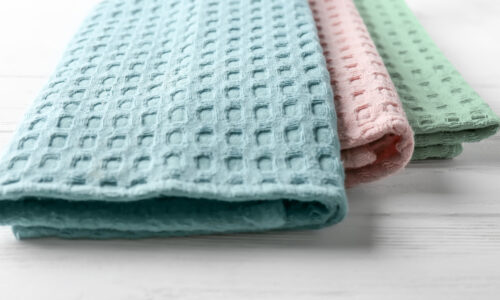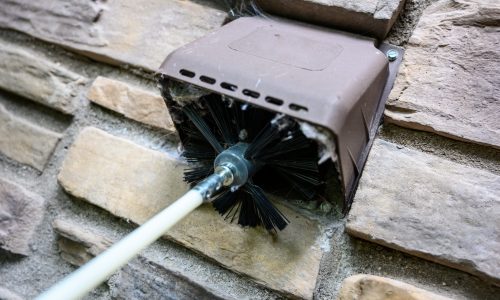The Best Wet Dry Vacuum
We looked at the top 18 Wet Dry Vacuums and dug through the reviews from 57 of the most popular review sites including and more. The result is a ranking of the best Wet Dry Vacuums.
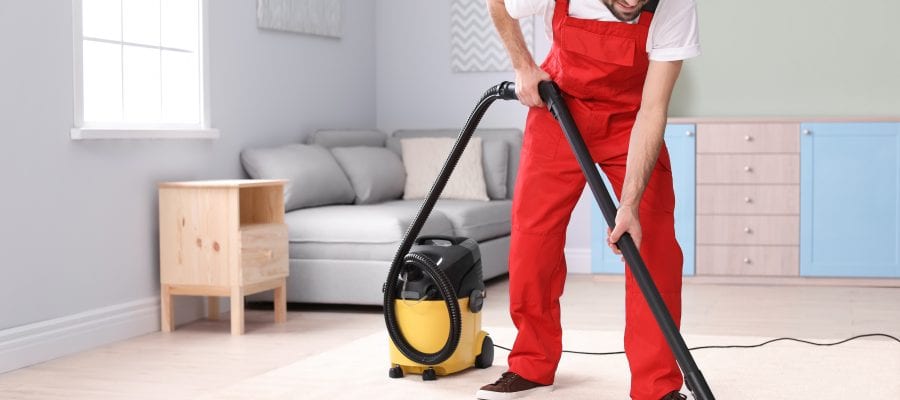
Our Review Process
Don't Waste Your Money is focused on helping you make the best purchasing decision. Our team of experts spends hundreds of hours analyzing, testing, and researching products so you don't have to. Learn more.
Our Picks For The Top Wet Dry Vacuums
- 1. Armor All Easy Conversion Wet Dry Vacuum, 2.5-Gallon
- 2. Bissell CrossWave 1785A Multi-Surface Wet Dry Vacuum
- 3. Tineco S3 Upright Self-Propelled Wet Dry Vacuum
- 4. Hoover Compact Fast-Dry Wet Dry Vacuum, .5-Gallon
- 5. Sun Joe Cannister Reusable Wet Dry Vacuum, 8-Gallon
- 6. Eureka NEW200 Streakless Swivel Wet Dry Vacuum
- 7. TICWELL Foam Filter Multi-Surface Wet Dry Vacuum
- 8. Vacmaster Handheld Blower Wet Dry Vacuum, 12-Gallon
- 9. Stanley SL18115P Corded Wet Dry Vacuum, 5-Gallon
- 10. DEWALT MAX Washable Filter Wet Dry Vacuum, 2-Gallon
- 11. Crafstman CMXEVBE17595 Cannister Dual-Flex Wet Dry Vacuum, 16-Gallon
- 12. WORKSHOP Qwik Lock Filter Wet Dry Vacuum, 16-Gallon
- 13. Vacmaster Beast Series Suction Power Wet Dry Vacuum, 16-Gallon
- 14. Rigid WD1273 Traditional Corded Wet Dry Vacuum, 12-Gallon
- 15. Bissell Garage Pro Blower Conversion Wet Dry Vacuum, 4-Gallon
- 16. Craftsman Compact Wet Dry Vacuum, 6-Gallon
- 17. Stanley Lightweight Wet Dry Vacuum, 4-Gallon
- 18. Stanley Large Capacity 2-In-1 Wet Dry Vacuum, 3-Gallon
This wet dry vacuum has the powerful suction of its peers, plus an impressive selection of nozzles. It can fit into corners without issue. The six-foot stretch hose also reaches those inconvenient crevices. The size makes it better for household tasks than for workshop cleanup, but it's excellent for cleaning your car or furniture.
Small but MightyThis wet dry vacuum is tiny, but powerful enough to tackle even big messes.
Keep your hardwood floors and area rugs looking like new with this wet dry vacuum. The dual action brush roll is able to grab everything from your child's spilled cereal to your pet's hair. The vacuum is also user-friendly with an on-demand solution trigger and two smart-touch controls on the handle.
Great for Pet OwnersThanks to the two tank system on this wet dry vacuum, clean and dirty water are kept separate.
If you're looking for a reliable wet dry vacuum to keep your sealed hardwood floors looking their best, this model is an excellent choice. It's lightweight and easy to maneuver and can run for up to 25 minutes on one charge. It also runs quietly, so you'll be able to clean while your little ones nap.
Top ChoiceThanks to the two-tank technology used on this wet dry vacuum, you don't have to worry about your clean and dirty water mixing.
This powerful wet dry vacuum utilizes both suction and squeegees to quickly dry flooring after a thorough clean. You can use the machine on any sealed flooring, including hardwood and tile. It's also an excellent option if you have pets in the home, as it tackles accidents like a champ.
Easy to ManeuverThe adjustable handle and compact design of this wet dry vacuum make it easy to maneuver.
Buying Guide
What do flooded basements, messes in your workshop and the ashy aftermath of a BBQ have in common? If you’re thinking that they’re all major annoyances, you’re not wrong — but they’re also all jobs for a wet/dry vacuum.
Wet/dry vacs, or shop vacs, are common accessories in woodshops, but they can also help out with lots of different messes. These versatile appliances have more powerful suction, plus tougher filters and sturdier canisters than a standard vacuum. They can pick up debris like nails and screws, and you can use them to clean up wet messes. Puddles from a leaky dishwasher or water basins that need emptying don’t stand a chance against a wet/dry vac.
Standard vacuums operate using a relatively simple process. Once you turn them on, the motor receives electricity that drives the fan and the brush roll (that spiky part that goes deep into your carpet and gets tangled with hair). After the motor starts running, it creates an area of low pressure behind the fan, which generates the suction you need to chase down those dust bunnies. Your messes move into the vacuum’s removable dust bag or canister, and poof! You’ve got a clean floor.
Shop vacs have different power levels for different size messes.
“A wet/dry vacuum’s power is measured in Sealed Pressure (or SP) units,” says Vicki Liston, a home improvement expert and host of “On The Fly…DIY,” an award-winning show with project tutorials. “Vacs with an SP rating over 75 should be able to handle almost everything you throw at them. “
Cubic Feet per Minute, or CFM, is your vac’s airflow rating.
“If you’re sucking up tiny particulates like sawdust, opt for something that’s at least 90 CFMs,” adds Liston. “If you’re vacuuming up heavier items like nuts and bolts, look for an Air Power (AP, also called Air Watts) rating over 250.”
Another difference between wet/dry vacuums and standard vacuums is the motor placement. Instead of sitting inside of the vacuum’s canister, a wet/dry vac’s motor sits on top of the canister. This design allows anything that you suck up through the hose to go directly into the canister, instead of passing over the motor. It’s the reason that wet/dry vacs can safely pick up water — if the water was moving through electrical or mechanical parts, it could create a dangerous electrical shock.
Some wet/dry vac models also vent air through an opening in the canister. With the help of a few accessories, you can turn this opening into a blower on many shop vacs. Vacs that convert into a blower make your autumn leaf chores much easier.
We’ve covered the wet/dry vacuum basics, but make sure to check out our Tips & Advice to find the perfect choice for your needs.
Our Expert Consultant

Home Improvement Expert
Vicki Liston writes, produces, and narrates “On The Fly…DIY,” an award-winning home improvement and DIY show of unique project tutorials for the casual DIY’er.
Home improvement and all things DIY have been Liston’s passion since she bought her first house in 2007 and she started making video blogs in 2014. She’s performed hundreds of DIY projects, from small ones to major, wall-smashing renovations and can teach you how to make a trendy DIY barn door for cheap. The proceeds earned from “On The Fly…DIY” are donated to no-kill animal shelters and rescue organizations.
Why we recommend these wet dry vacuums?
Products Considered
Products Analyzed
Expert Reviews Included
User Opinions Analyzed
Our experts reviewed the top 18 Wet Dry Vacuums and also dug through the reviews from 57 of the most popular review sites including and more. The result is a ranking of the best of the best Wet Dry Vacuums.
DWYM is your trusted roduct review source. Our team reviews thousands of product reviews from the trusted top experts and combines them into one easy-to-understand score. Learn more.
What to Look For
- Before you buy, think about where you’ll get the most use out of your wet/dry vacuum. If you’re buying it for heavy-duty construction projects, a larger unit is appropriate. A handheld vac is fine for everyday jobs like vacuuming your car or sucking up spilled liquids in your kitchen.
- Wet/dry vacs have an unmatched level of versatility and they can pick up far more debris than a standard vacuum. However, that convenience comes at a cost. Most wet/dry vacs are much heavier and bulkier than a standard vacuum, so make sure you take a look at the unit’s weight when you purchase it. You’ll also want to account for the weight of the dust, dirt and junk you’ll be picking up. Make sure you can comfortably lift and handle that weight. Most vacuums that weigh over 20 pounds will have something in the neighborhood of a 16-gallon capacity, while vacuums under 10 pounds can pick up roughly 2.5 gallons of mess.
- Check out the length of the vacuum’s hose and power cord. Unless you want to stop every few minutes and find a new power outlet, you’ll need a nice long cord for vacuuming up larger areas. A 12-foot cord works well for bigger rooms, while a six-foot cord is easy to store and makes small jobs simple and quick.
- Will you need a wet/dry vac with wheels? Cleaning up an entire construction area means you’ll need some help moving the vac around, but wheels can get unwieldy if you need to pick up the vac and get between seats in your car.
- Wet/dry vacs come with accessories galore so that you can get the most out of your investment. A fully accessorized wet/dry vac will come with a brush, a crevice tool, a detail brush and a deluxe car nozzle. It’s a great pick for cleaning out your car. Others will add multiple extension wands, so they’re ideal for reaching every space in your woodshop.
- A wet/dry vacuum’s design prevents water from crossing paths with the interior electrical components, but you could be in for some trouble if the external cord winds up in a puddle. Investing in a Ground Fault Circuit Interrupter (or GFCI) is the smartest thing you can do to stay safe while using your vacuum’s wet mode. GFCIs trip electric power in as little as 1/40 of a second, preventing shocks or reducing the shock’s damage.
- Three-pronged electric outlets have built-in GFCIs, but there are also portable versions that you can plug into two-pronged outlets, as well as attachment plugs that incorporate the GFCI module. Portable GFCIs and Cord-Connected GFCIs are available online or at your local hardware store.
- Although wet/dry vacuums are designed differently than standard vacuums, they still use filters. “It wasn’t until I aerated a room with drywall dust that I realized just how critical correct filter size was in wet/dry vacuums,” says home improvement pro Vicki Liston. “Before starting every job, consider the debris size and install the appropriate filter. They’re available from ‘fine’ to ‘large’ and ‘wet’ for damp environments.”
- You’ll also have to swap out your filters depending on what type of job you’re doing, and you’ll need to clean the filters regularly or buy replacements. Double-check the cost of the filter replacements before you buy your wet/dry vacuum.
- Cleaning your filter is essential if you want your vacuum to function at its highest level. Wet filters are made from foam, and you’ll have to set them aside to dry after every wet mess you clean up. After they dry, give them a good shake to knock off any debris. If it’s still dirty, hold it under running water for a few minutes. Make sure you rinse from the inside of the filter to the outside. Let it sit for a long time in a room with low humidity — this prevents mold from forming.
- Cleaning dry filters is a bit simpler. If they’re reusable, you can knock loose any debris and call it a day. If you just finished a big job, rinse them with water on both sides and give them plenty of time to air dry. Using a disposable filter? Just toss it and start over with a new filter the next time you’re vacuuming.
- The standard filter you’ll use for dry messes will vary depending on which wet/dry vac you choose. Some come with HEPA filters. These filters force air particles through the ultra-fine mesh, and they’re great at picking up small particles and allergens. It helps prevent dust from spreading as you’re cleaning up, making it an ideal filter for anyone with allergies or asthma.
- You’ll have to dump some wet/dry vacs upside down to clean out the canister. Other models have dust bags that you can empty or remove instead of flipping the whole canister upside down. Make sure your wet/dry vacuum is easy for you to lift and tilt before you hand over your cash.
More to Explore
The history of vacuums might sound boring, but trust us — it doesn’t suck. Windy City resident Ives McGaffey patented the precursor to the modern vacuum on a warm summer day in 1869. It was called a “sweeping machine,” and it was designed to clean rugs.
The sweeping machine was a far cry from our modern wet/dry vacuums, but Ohio janitor James Spangler brought us one step closer in 1907. He realized that his carpet sweeper was kicking up dust and causing his chronic coughing fits, so he buckled down with his Midwestern work ethic and created an alternative. Spangler stapled a soap box to a broom handle, tacked on an old fan motor and added a pillowcase as a dust collector. His cough disappeared, and he received his patent in 1908.
After World War II, a new vacuum arrived on the scene. The first wet/dry vacuums were enormous metal appliances, and they were mostly used in industrial and woodshop settings. It took a while, but engineers finally developed smaller units for residential areas. The trickiest part was muffling the loud “screaming” noise the wet/dry vacuums made when they turned on!
Today’s wet/dry vacs aren’t the quietest appliance around, but they definitely don’t sound like a low-budget horror movie.

